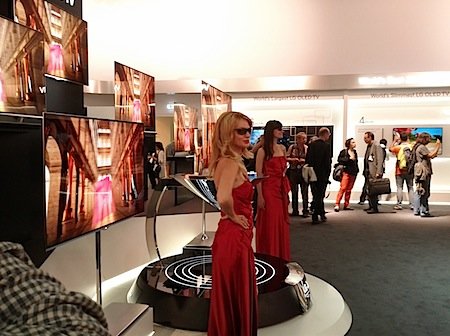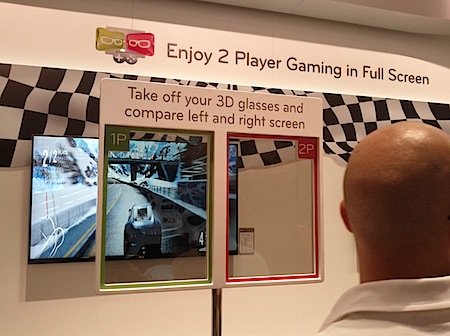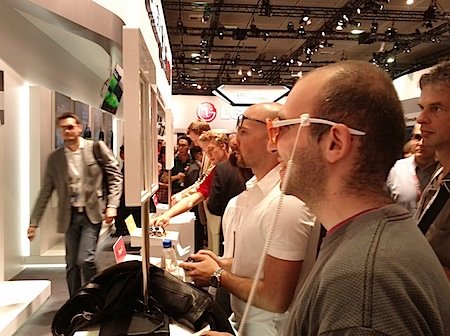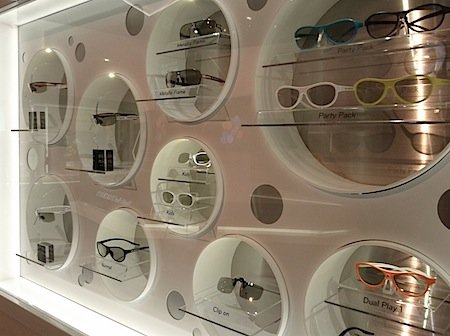
My previous post from my trip to the IFA consumer electronics show was all about OLED and 4K and what LG, who invited me to the show, were promising consumers for the years ahead in the field of TV.
But I also wanted to share some of the other stuff I saw and give you my take on some of the technologies on offer.

One thing we’re going to be hearing more and more about is the ability of TV screen to show different images to two people watching it. Now, for some this might sound like super anti-social. Imagine a husband and a wife sitting side by side on a sofa but each of them watching a different movie and hearing the sound on separate headphones. How romantic!
But wait, there is more to that technology, especially when it comes to gaming.
Today, playing two player racing games (and other games, obviously) meaning SPLITTING the screen. But the same technology that is used to display 3D images can be repurposed for gaming. With special gaming glasses, player 1 can see a full screen view of the game that is different from player 2.
Judging by the enthusiasm of some of the geeks at the demo stations of this technology, I think this might actually be a winning proposition.

This brings us to 3D glasses (and “dual viewing” glasses.)
There is a competition going on between active and passive glasses. Active glasses, like this you get with Samsung 3D TVs, actually are battery powered, because they have electronic shutters in the glass that open and close very quickly to show your right eye a different image from what your left eye sees and thus creating the illusion of seeing 3D image with depth.
Passive glasses, on the other hand, don’t need batteries. They use so-called polarized glass, much like the glasses you get in 3D movie theaters. Each of the two lenses of the glasses is polarized in a different direction. The TV screen itself has a patterned filter, essentially using half of the horizontal lines on the screen to show one image and the other half of the lines to show the other image.
LG has clearly decided to go with passive glasses, which are lighter and cheaper. LG is offering those in many design styles and as clip-ons for people who wear glasses.
For a deeper explanation of both active and passive 3D technologies, check out this great CNET article. Both methods have their pros and cons. Many consider the whole 3D thing more of a gimmick. But I think it’s a gimmick that will stay with us for a while.

Comments
One response to “More from IFA and the future of TV: dual viewer screens, the war of 3D glasses and magic remotes”
That split-screen thing is amazing. The wife will think I’m wathcing the Notebook while I’m actually watching Adriana Lima running on the beach